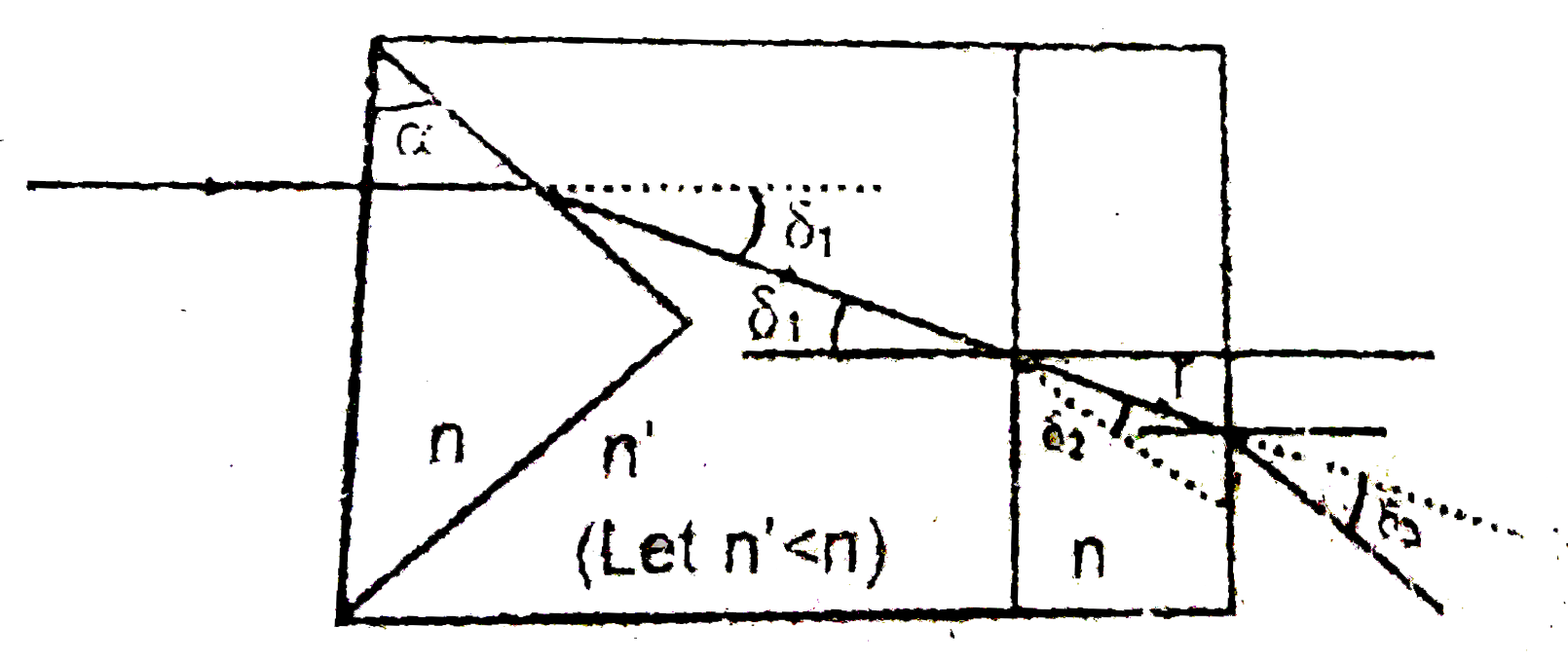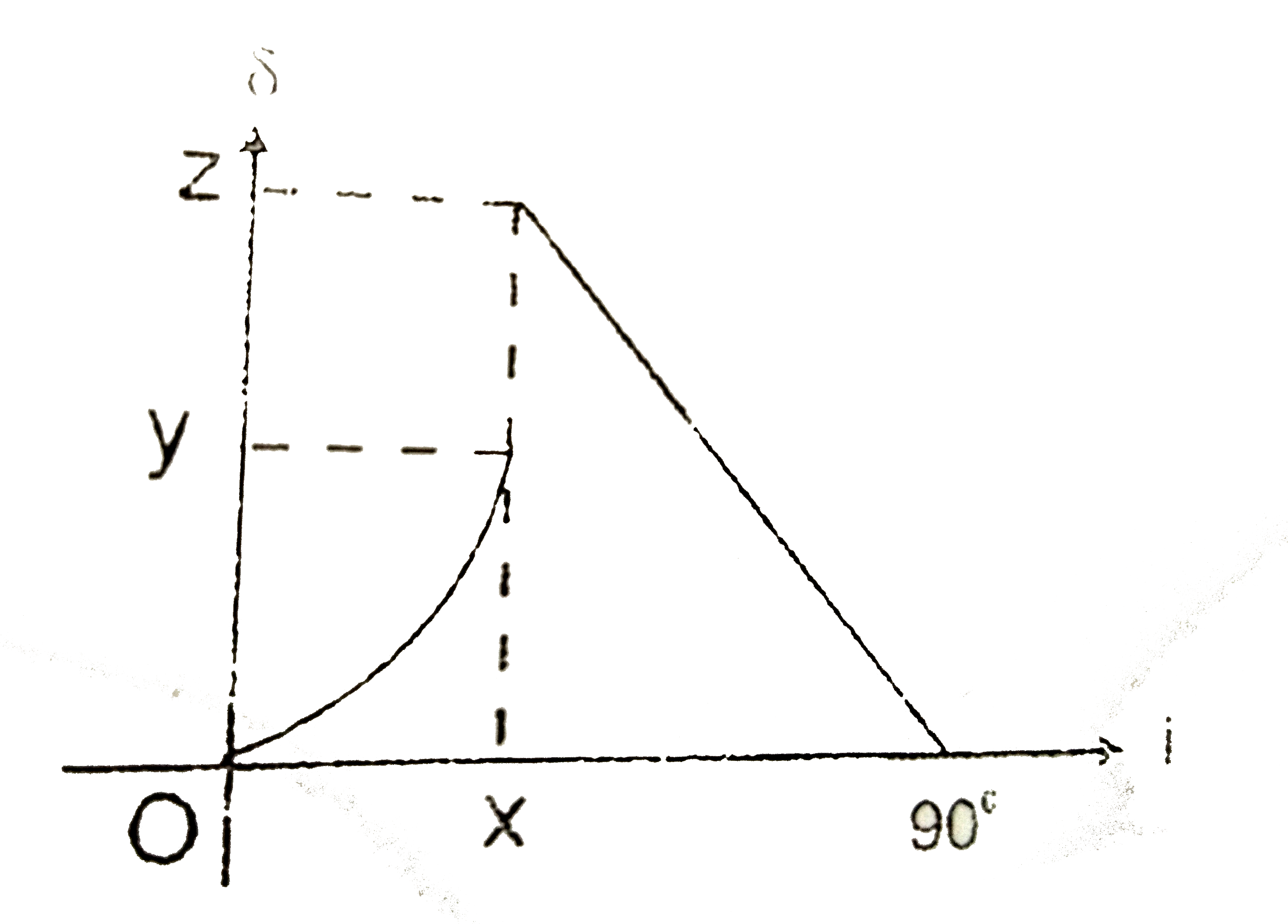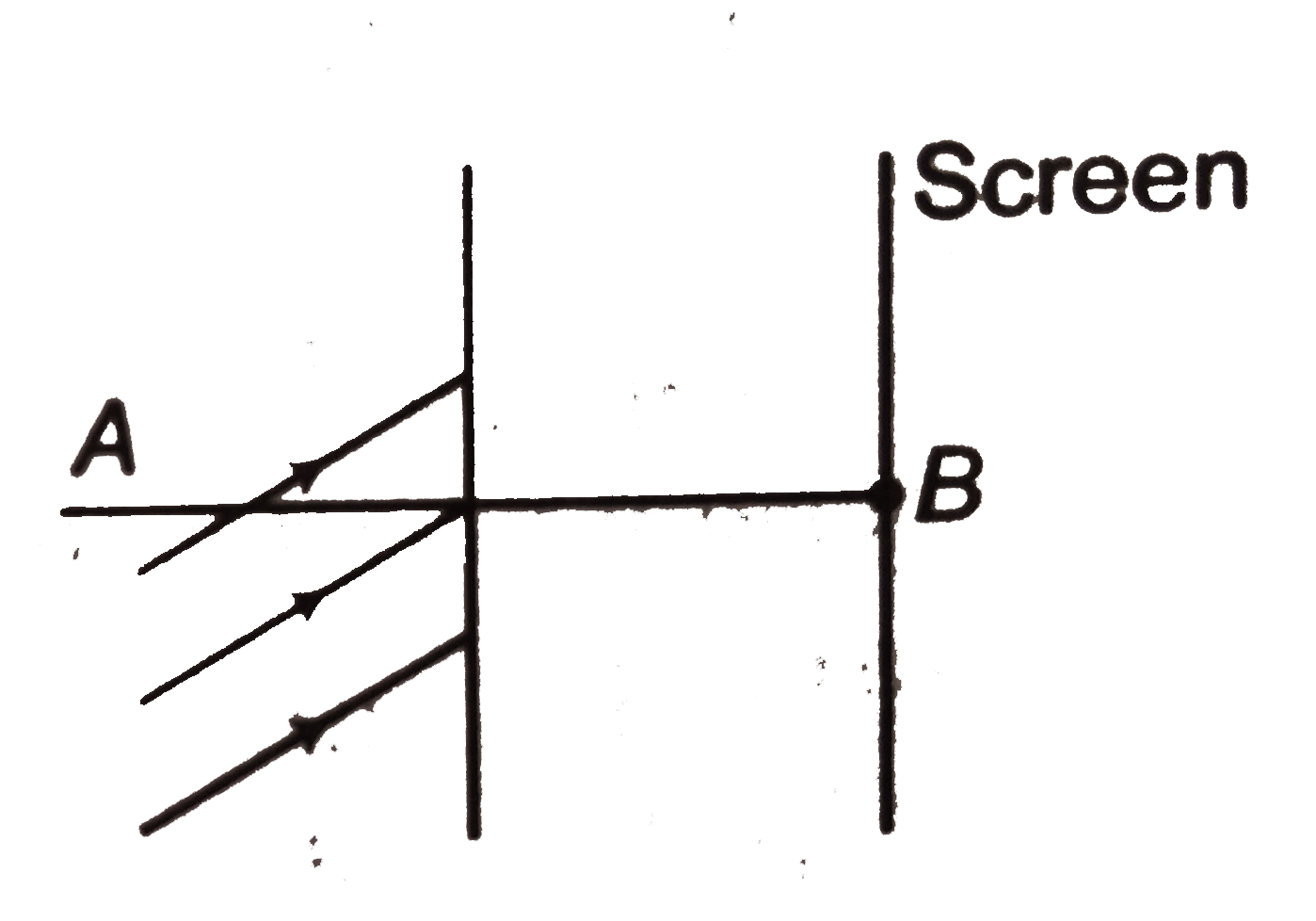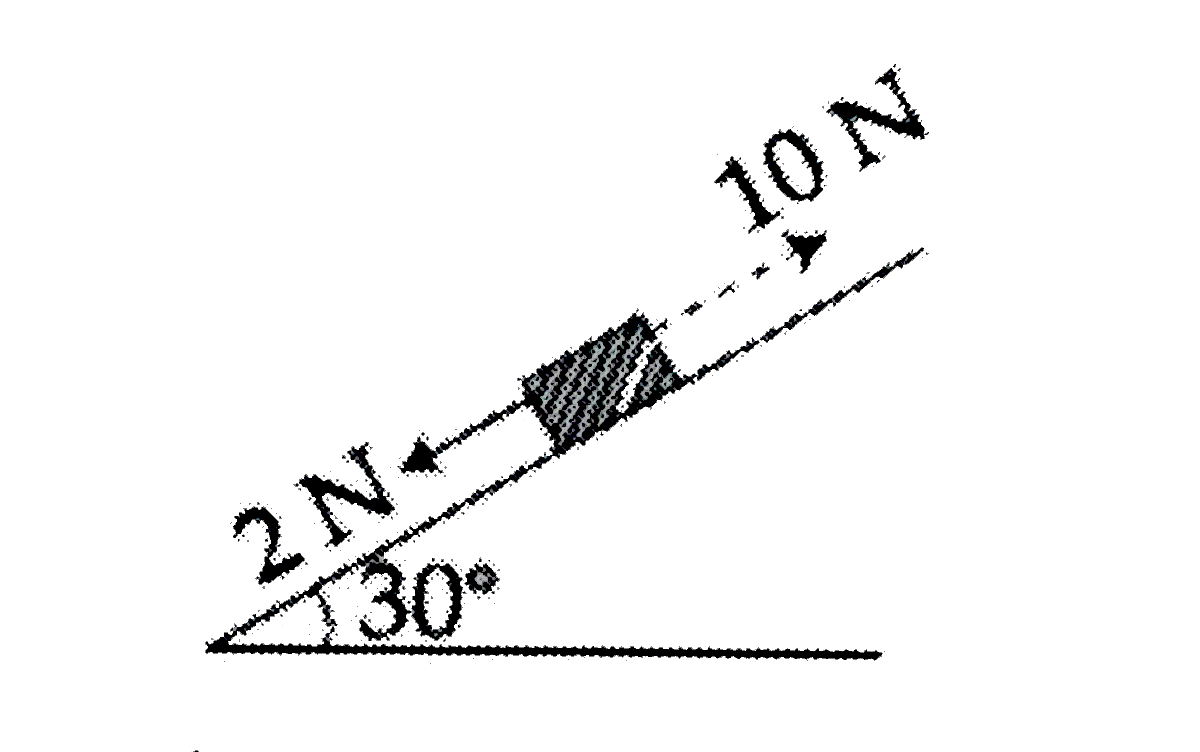A beam of light is incident on a system as shown in the figure. Behind the prism there is a plane parallel plate, with the space between filled up with benzene (R.I = n'). Find the deviation in the emergent beam w.r.t incident beam in terms of α,n,n'. Assume α = small angle [Take both cases n>n'&n'>n]
![A beam of light is incident on a system as shown in the figure. Behind the prism there is a plane parallel plate, with the space between filled up with benzene (R.I = n'). Find the deviation in the emergent beam w.r.t incident beam in terms of alpha,n,n'. Assume alpha = small angle [Take both cases n gt n' & n' gt n]](https://d10lpgp6xz60nq.cloudfront.net/physics_images/RES_DPP_PHY_XII_E01_256_Q01.png)
The correct Answer is:[(n−n')α]
As net deviation =δ1−δ2+δ2
=δ1−(δf−r)+(e−r)
=e=nr=n'δ1
∴δrel=(n−n')α

Topper's Solved these Questions
- BOOK - RESONANCE ENGLISHCHAPTER - DAILY PRACTICE PROBLEMEXERCISE - DPP No.1920videos
DAILY PRACTICE PROBLEM
- BOOK - RESONANCE ENGLISHCHAPTER - DAILY PRACTICE PROBLEMEXERCISE - DPP No.209videos
DAILY PRACTICE PROBLEM
- BOOK - RESONANCE ENGLISHCHAPTER - DAILY PRACTICE PROBLEMEXERCISE - DPP No.1720videos
DAILY PRACTICE PROBLEM
- BOOK - RESONANCE ENGLISHCHAPTER - CURRENT ELECTRICITYEXERCISE - High Level Problems (HIP)19videos
CURRENT ELECTRICITY
- BOOK - RESONANCE ENGLISHCHAPTER - ELECTRO MAGNETIC WAVESEXERCISE - Exercise 327videos
ELECTRO MAGNETIC WAVES
Similar Questions
A ray of light is incident on a parallel slab of thickness t and refractive index n. If the angle of incidence θ is small, than the lateral displacement in the incident and emergent ray will be
View SolutionA narrow parallel beam of light is incident on a transparent sphere of refractive index n if the beam finally gets focused at a point situated at a distance=2×(radius of sphere) form the center of the sphere then find n?
View SolutionA ray of light is incident on the left vertical face of glass cube of refractive index n2, as shown in figure. The plane of incidence is the plane of the page, and the cube is surrounded by liquid (refractive index=n1). What is the largest angle of incidence θ1 for which total internal reflection occurs at the top surfaces?
 View Solution
View SolutionLight is incident from glass to are. The variation of the angle of deviation δ with the angle of incidence i for 0<i<90∘ If the value of (x+y+z) is nπ6 then value of n.
 View Solution
View SolutionA beam of light parallel to central line AB is incident on the plane of slits. The number of minimum, obtained on the large screen is n1. Now if the beam is tilted by some angle (≠90∘) as shown in figure, then the number of minima obtained is n2. Then,
 View Solution
View SolutionWhen unpolarised light beam is incident from air onto glass (n=1.5) at the polarising angle
View SolutionWhen unpolarised light beam is incident from air onto glass (n=1.5) at the polarising angle
View SolutionA beam of light passes from medium 1 to medium 2 to medium 3 as shown figure. What may be concluded about the three indices of refraction, n1,n2,andn3 ?
 View Solution
View SolutionA parallel paraxial beam of light is incident on the arrangement as shown (μA=3/2,μB=4/3). The two spherical surfaces are very close and each has a radius of curvature 10 cm. Find the point where the rays are focussed. (w.r.t. point of entry)
 View Solution
View SolutionA block kept on a rough inclined plane, as shown in the figure, remains at rest upto a maximum force 2N down the inclined plane. The maximum external force up the inclined plane that does not move the block is 10N. The coefficient of static friction between the block and the plane is : : [Taking g=10m/s2].
 View Solution
View Solution

